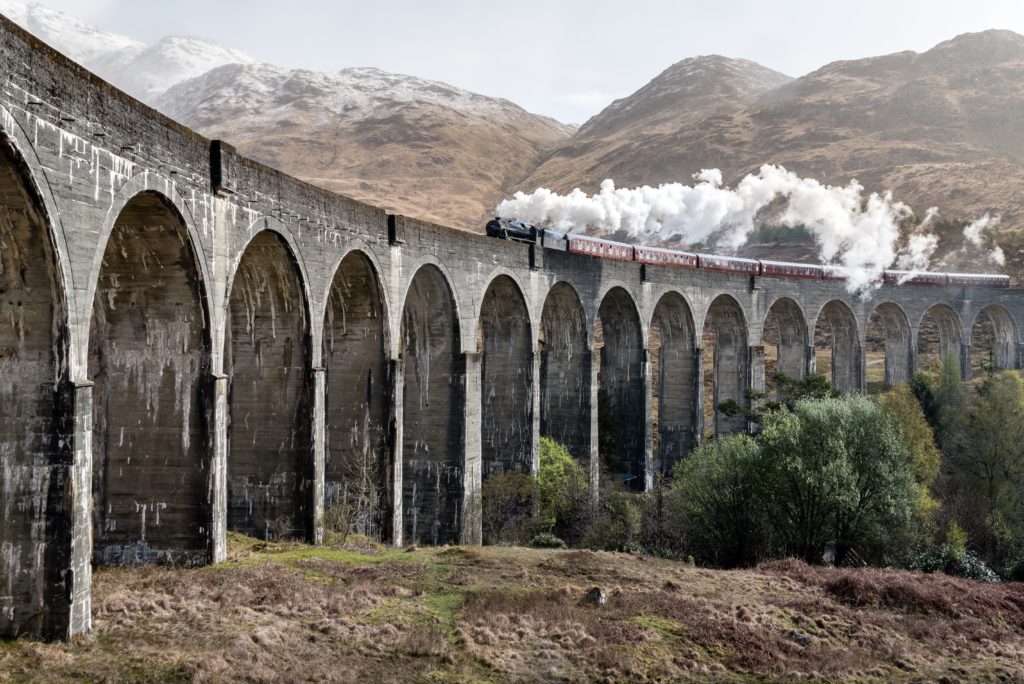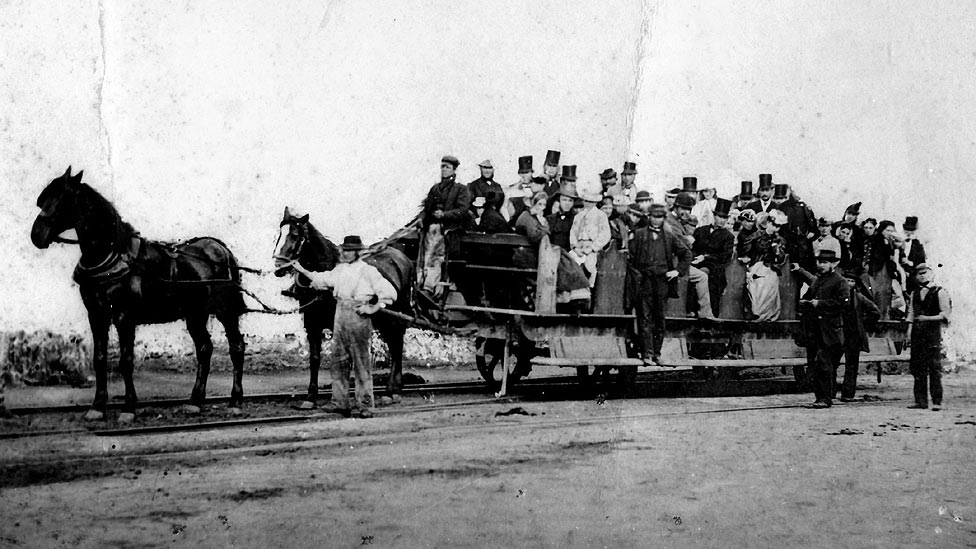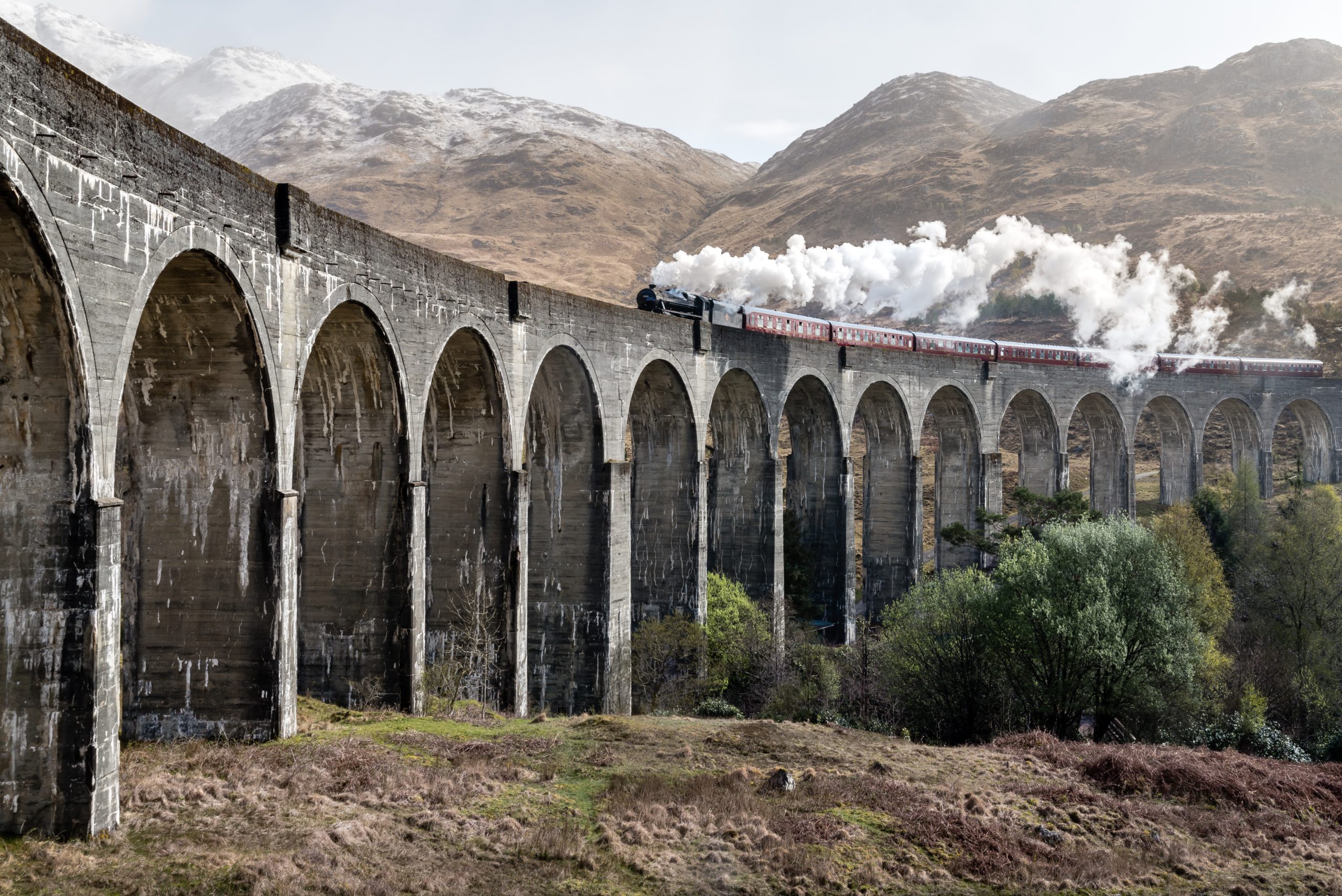
I learned this today. When was the first passenger train? The first passenger train was Locomotion No. 1. It departed on the Stockton and Darlington Railway on September 27th, 1825.
Railways go back thousands of years, but they haven’t always been used to carry people. The earliest railway ever discovered was in Greece, built in about 600 BC, but it wasn’t really a railway by the modern definition. It was a paved trackway that was 8 km long. It stretched across a narrow piece of land, and it was used to slide boats from the sea on one side to the sea on the other. The boats ran along a groove cut in the limestone floor, so it could possibly be called a grooveway.
A railway made of wood was discovered in China and carbon dated to about 200 BC. It had hard wood tracks along sleepers that were spaced out enough to allow a horse to gallop between the rails, pulling a cart. It could have been used to transport supplies to troops or materials to fix the Great Wall.
Wooden rails were used in Europe from 1515. They became common in the 1550s because horses could pull carts of coal from mines. These evolved into funicular railways where a cart would be connected to a cable. They were used to carry coal from the mines down to rivers where it could be loaded onto boats.
By the end of the 18th century, the wooden rails were slowly replaced with iron. It was easy to mold and would last much longer than a wooden rail. The wagons and carts were still powered by horses, though. A horse would pull a load of coal, or even a carriage of people along the tracks. There would be points along the route where the horses would be changed over. Horses can pull a lot, but they can’t run forever.

The first railway line to carry fare paying passengers was the Swansea and Mumbles line in Wales, the United Kingdom. The service began in 1807 and it has a claim to be the first passenger train in the world, but it was still horse-drawn and so I am not going to count it.
Between 1804 and 1812, steam engines were introduced and experimented on. There was a lot of interest in being able to haul coal from a mine with a steam engine. Horses can pull a lot of coal, but the potential for a steam engine was much greater. The first steam engine that pulled a load over a distance along a track was built in 1804 by Richard Trevithick. It wasn’t until 1812 that steam locomotives were commercially successful. The trains were used for shipping coal and other goods along short railways. There was no railway network yet.
A couple of problems had to be overcome before trains could start carrying passengers. The first problem was that the iron rails were brittle and would sometimes break under the weight of the train. This was solved in 1820 when John Birkenshaw came up with a way of rolling wrought iron. Wrought iron can deform more than cast iron without breaking. This makes it stronger and meant that trains could be heavier.
George Stephenson, known as the “father of the railways” built his first steam locomotive in 1814. In 1821, he was involved in the building of a railway from Stockton to Darlington. The railway was finished in 1825. The company building the railway had gone heavily into debt. They needed to make money on it quickly. Stephenson’s locomotive, Locomotion No. 1, was built on the new railway and it was opened on September 27th, 1825. The locomotive was fitted with coal wagons full of coal and coal wagons with seats. There was room for 300 people but about 600 climbed aboard the train before it set off. The train travelled at speeds between 4 and 15 km/h and it had a number of problems along the way (including losing a wheel off one of the wagons) but it made it to Stockton where 10,000 people waited to see it. The journey was a huge success, and it was the first passenger train in the world. The Stockton to Darlington line was mainly used to haul coal after this and the company that built the line made an enormous profit.
The popularity of railways took off exponentially from here. Steel rails were invented in the 1850s, making them far stronger and safer. More reliable and faster locomotives were also invented. The growing railway network had a major impact on society. It allowed people to travel. Holidays for workers became possible. Farmers could ship produce to far away towns, which increased their profits but also enabled people to eat vegetables in the cities. A standardized time was introduced so train timetables could be made. The price of coal dropped, and many other industries sprang up to service the new railways. It was an enormous change in people’s lives.
So, the first passenger train was in 1825 and it was along the Stockport to Darlington railway line in the UK. And this is what I learned today.
Sources:
http://www.sbdepotmuseum.com/1800-1849/september-27-1825-worlds-first-passenger-train.html
https://en.wikipedia.org/wiki/Timeline_of_railway_history
https://en.wikipedia.org/wiki/History_of_rail_transport#Britain
https://en.wikipedia.org/wiki/Funicular
https://en.wikipedia.org/wiki/Middleton_Railway
https://en.wikipedia.org/wiki/Steam_locomotive
https://en.wikipedia.org/wiki/Stockton_and_Darlington_Railway


[…] The first railroad tunnel was built in 1793 in Fritchley, England. It was built for a horse-drawn rail carriage. The first tunnel built underwater was the Thames tunnel built between 1825 and 1843 by […]